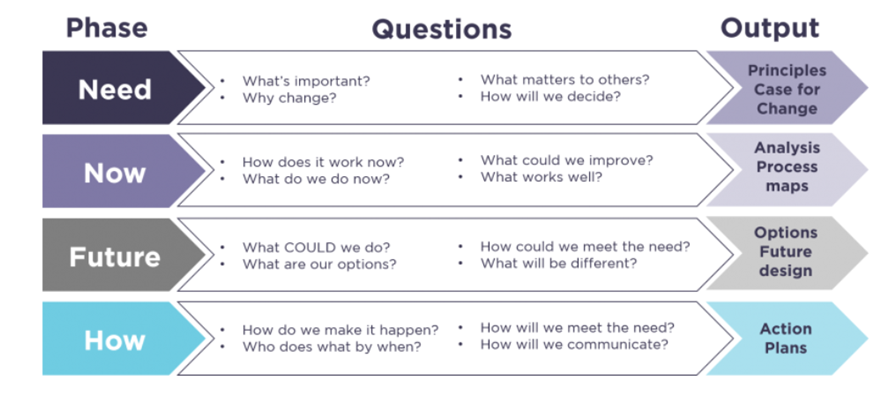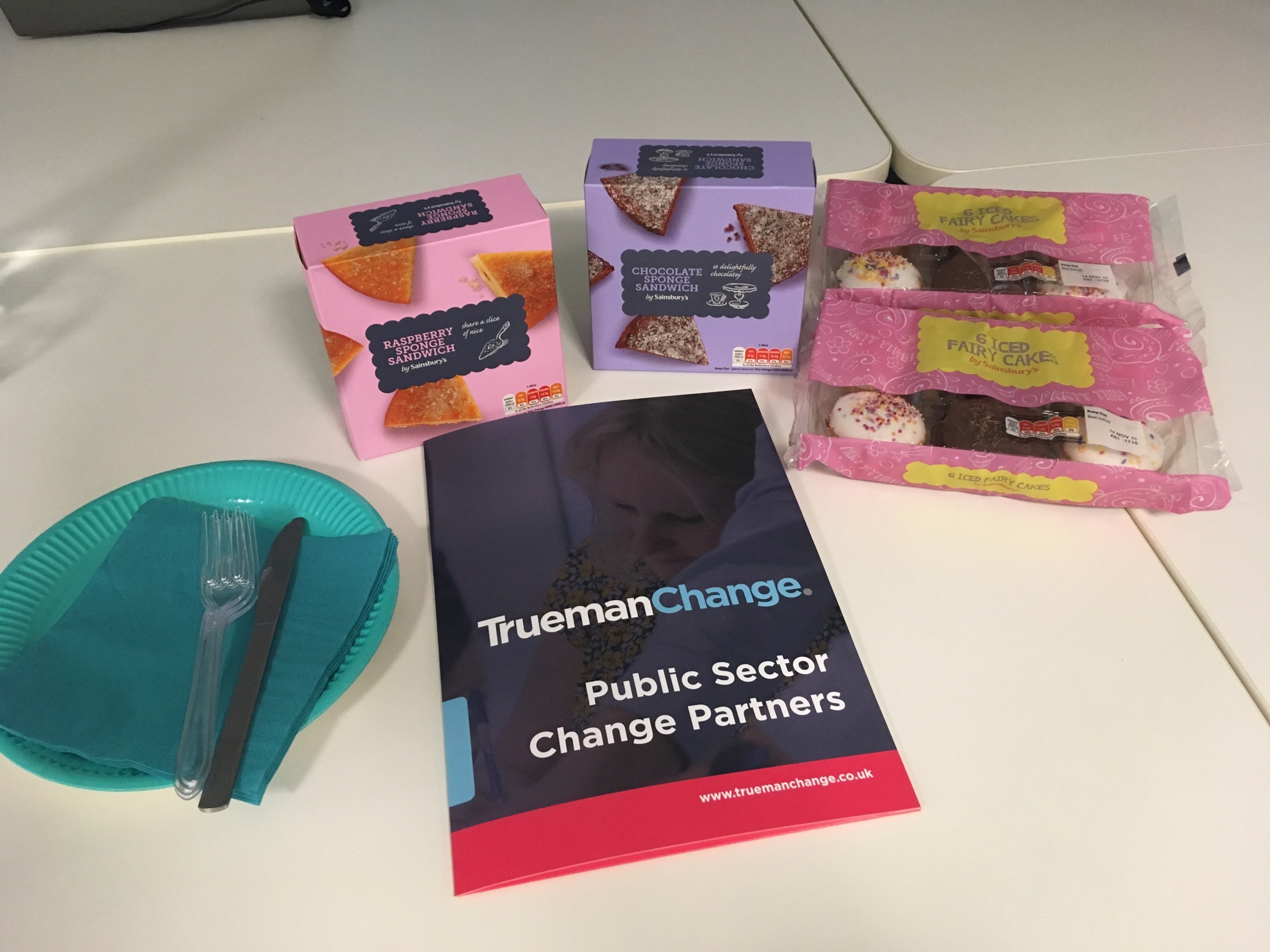What is Co-Design?
Co-design has recently become a buzz word in the world of change management, particularly in the public sector, but what does it mean? In simple terms, co-design is when you work with a group of people (staff, partners or citizens/residents) to design a change together. It’s a move away from internally focussed change design, which may previously have been done by consultants, change managers or leaders. The purpose of co-design is to get greater diversity of thought and experience around the table. It is a more meaningful method of sharing the design process (warts and all) rather than more traditional consultation processes, where finished proposals are presented to others to comment on.
Why is it important?
At the start of our learning event we asked people to reflect on what makes a bad change journey. The usual themes came out: lack of communication, lack of control, lack of transparency. We started with this activity because working with people to share the design process from the beginning helps to prevent some of these issues. The idea is that change/project managers engage with stakeholders at the beginning and ask for their input on what the change should be and how it should be done. Doing this often creates a core group of people who buy in to the change, who can support its delivery and become ‘critical friends’ to keep you on the right track.
Also, it’s often forgotten that, despite all the experts, the leaders, and dare I say consultants (myself included!), it is often the front line staff and people who use services who know better than anyone how it could be improved! Why wouldn’t you want to harness that?
Co-Design Approach

We’ve conducted co-design workshops in a range of projects, from Children’s Services, Museums to Adult Social Care and back office functions. We have found the best way to run a successful co-design process is to run a series of workshops, each tackling a different question:
- Why do we need to change?
- How does it work now?
- What could the future look like?
- How do we make it happen?
We usually run these as separate workshops as they require different mindsets. We only had a couple of hours to run through them all at, so we flew through the process at high speed. To make the nature of the change being co-designed interesting for everyone, we co-designed a cake!
1. Why do we need to change?
This part of the process is designed to go deep. People need to focus on why the change should happen and have an anchor to come back to, something to test all ideas against. To create this, we work with the group to create a set of principles. Real examples of guiding principles created with clients before include:
- “Ensure children find families as quickly as possible” (in adoption services)
- “Simplify the process” (in adult social care)
- “Make the best use of available resources” (in corporate project)
Our cake principles included 'Using only natural ingredients', 'Good texture' and 'high quality and luxury'
2. How does it work now?
Some co-design processes miss this step, as there can be an argument that true design happens when you start with a blank piece of paper. On the projects we have worked on we’ve found it useful to ensure we fully understand the current state. Then, we can learn from the good and bad of how things work now.

3. What could the future look like?
During this session we look to the future and start to build a picture of what the change will be. We ask a range of questions, like “what are our options?”, “what will it look like?”, “how will it work?” and “what will be different?”.
We challenge all ideas back to the principles we established in session one to test them. In this part of the cake session we talked size, texture, flavour and decoration. We captured as much detail as possible, constantly asking if our ideas were in line with our principles.
4. How do we make it happen?
Here is where the project management comes in. Often people are tempted to neglect this session as it’s not as fun and creative as others, but it’s vital. This is where you cement the plan of how this change will be achieved, and where you gain the buy in from people around the table to drive it forward. We tend to avoid getting too technical and ‘project managementy’ in these sessions, by focussing simply on who will do what by when. During this part of our cake session we talked about buying ingredients, what equipment we needed and whether we needed a cake tasting session before the finished product!
Practical Tips
When planning a co-design processes it’s important to consider practicalities:
- Who needs to be involved? It’s crucial to get the right people around the table. Be brave here and don’t just invite people who will share your view. The key is diversity of thought.
- How do we get them involved? When working with citizens, communities or partners we need to think about how we approach them; what’s in it for them? How can we ensure they can be involved?
- Timings, duration, location are important. Make sure you’re not limiting yourself and preventing others from being involved because of these. Check in with the group as you go through the process to make sure you’re making it as easy as possible for everyone to attend.
- Hear everyone’s voice. The role of facilitator is to facilitate and not lead. Challenge yourself not to input. This session isn’t about the change manager or leader, it’s about others. Also pay attention to who has spoken and who hasn’t. Make sure you invite everyone to take part.
- Be clear on constraints. There’s nothing more demotivating than investing time and effort in a design process only to be told at the end “we can’t afford that”. Be clear at the start about what constraints you have and build them into your principles.
- Keep it creative and engaging. At our learning session we used post–its and whiteboards, and we talked about imagery and games. No one wants to sit in a room for two hours just listening to a person talk. So, think about how you can break the session up and make it creative. Co-design workshops shouldn’t feel like an average meeting.
- Be reactive and open. We all want to plan the perfect session but be ready to think on your feet and react to the energy in the room (if it’s dropping, take a break or do an activity). Be open to ideas you haven’t heard before and be ready to change your own view on how change should be done!
So, this sums up our latest free learning session on co-design techniques. One thing we learnt is that people are very passionate about cakes! We can’t wait for our next one where we will hopefully have our cake made for you!
